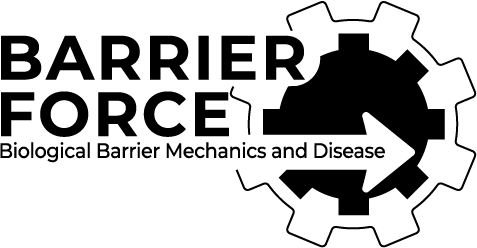Restoring mechanophenotype reverts malignant properties of ECM-enriched vocal fold cancer
Jasmin Kaivola, Karolina Punovuori, Megan R Chastney, Yekaterina A Miroshnikova, Hind Abdo, Fabien Bertillot, Fabian Krautgasser, Jasmin Di Franco, James R W Conway, Gautier Follain, Jaana Hagström, Antti Mäkitie, Heikki Irjala, Sami Ventelä, Hellyeh Hamidi, Giorgio Scita , Roberto Cerbino, Sara A Wickström, Johanna Ivaska
bioRxiv. [Preprint]. 2024.
ABSTRACT
Increased extracellular matrix (ECM) and matrix stiffness promote solid tumor progression. However, mechanotransduction in cancers arising in mechanically active tissues remains underexplored. Here, we report upregulation of multiple ECM components accompanied by tissue stiffening in vocal fold cancer (VFC). We compare non-cancerous (NC) and patient-derived VFC cells – from early (mobile, T1) to advanced-stage (immobile, T3) cancers – revealing an association between VFC progression and cell-surface receptor heterogeneity, reduced laminin-binding integrin cell-cell junction localization and a flocking mode of collective cell motility. Mimicking physiological movement of healthy vocal fold tissue (stretching/vibration), decreases oncogenic nuclear β-catenin and YAP levels in VFC. Multiplex immunohistochemistry of VFC tumors uncovered a correlation between ECM content, nuclear YAP and patient survival, concordant with VFC sensitivity to YAP-TEAD inhibitors in vitro. Our findings present evidence that VFC is a mechanically sensitive malignancy and restoration of tumor mechanophenotype or YAP/TAZ targeting, represents a tractable anti-oncogenic therapeutic avenue for VFC.
PMID: 39372730 | DOI: 10.1101/2024.08.22.609159
